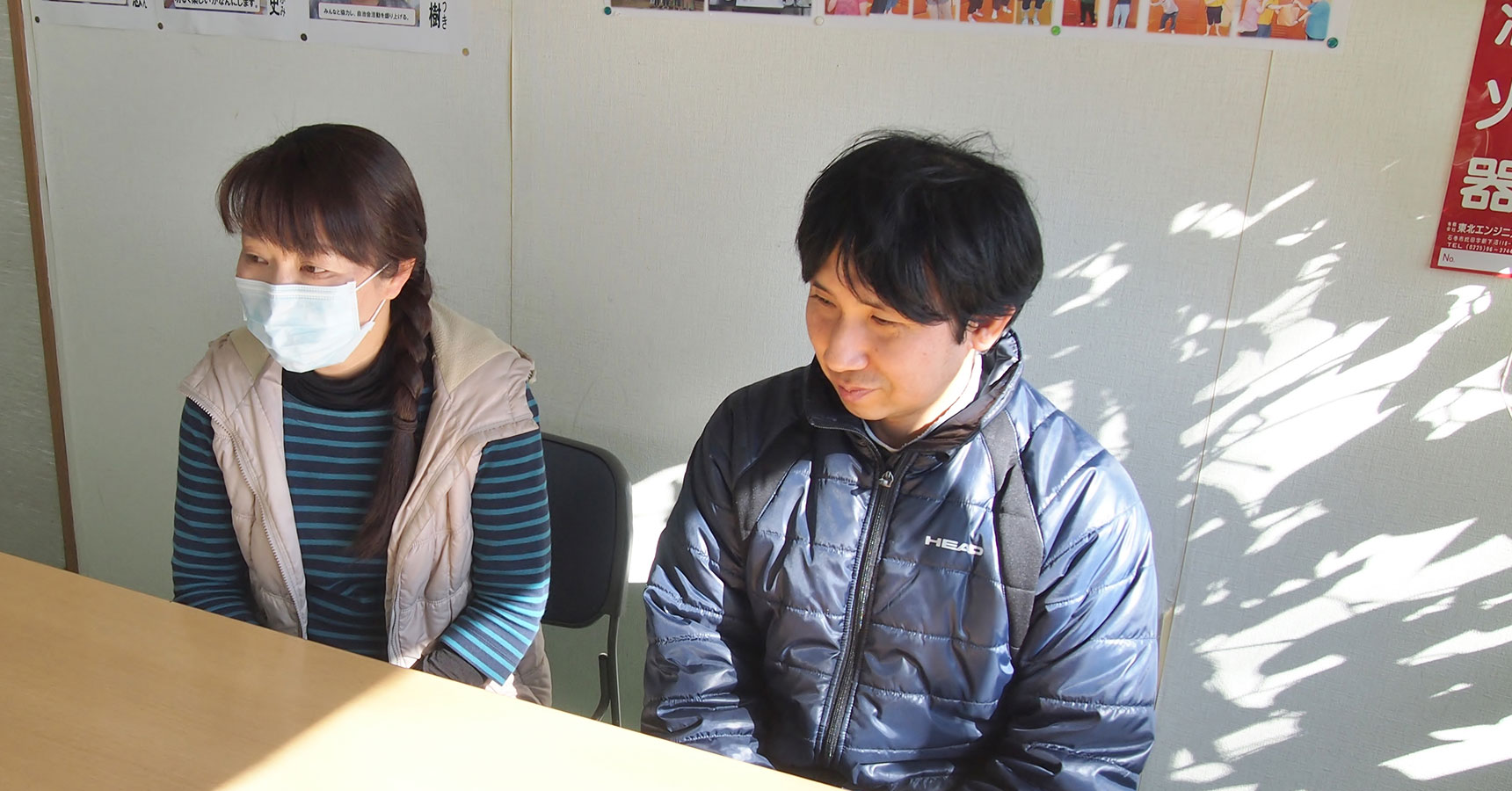
Story: Ishinomaki Shoshinkai Foundation, Kanan Vocational Support Center for the Disabled
Kanan Trainee: Mr. Konno (man/ age 37 at the time/ Intellectual disability)
Kanan Director: Ms. Yanagibashi

Story: Ishinomaki Shoshinkai Foundation, Kanan Vocational Support Center for the Disabled
Kanan Trainee: Mr. Konno (man/ age 37 at the time/ Intellectual disability)
Kanan Director: Ms. Yanagibashi
Where were you at the time?
Konno: At the time of the earthquake, I was in the cake shop where I was employed. It shook really hard, so we evacuated to the parking lot outside. Then it started snowing.
I was there with my boss and the other employees.
It shook quite a lot inside the factory, so things fell down. The heavy oven moved a centimeter, and all kinds of utensils and the bowl we use to crack eggs fell and made a big mess.
After the shaking stopped, I got worried about my family and tried calling them, but I couldn’t get a hold of them.
What did you do after evacuating to the parking lot?
Konno: After the shaking stopped, I didn’t head home right away, but stayed with the people I work with. But I was worried, so at nighttime I tried to go home, but a ship had been flipped over on the road to my house and was spilling oil everywhere, so I was stuck. But I did walk to Jobon no Sato (a nearby rest stop).
So then from Jobon no Sato, you started walking towards your house again.
Konno: The reason I didn’t go home right away is because I was waiting to see if it would be possible to go home. I went to Jobon no Sato for the moment, but it was full of cars. There were already people sleeping there, so I couldn’t stay. The electricity was off and it was completely black, and I didn’t have any food.
Then night came and there was no way I could get home because it was dark, so I went back to the factory where I work and slept there. I thought it would be better to go home in the morning.
Was your family okay?
Konno: (*Mr. Konno has a father, mother, older brother, and older sister.) The tsunami took our house, and my mom and dad went missing. My brother happened to get rescued by someone and was okay. My sister was working when the earthquake happened, but was also okay.
My brother was at Hashiura Elementary School, and my sister had evacuated to Kitakami Junior High School. My sister says someone with a small truck gave her a ride and helped her (to evacuate). I met up with the two of them after that.
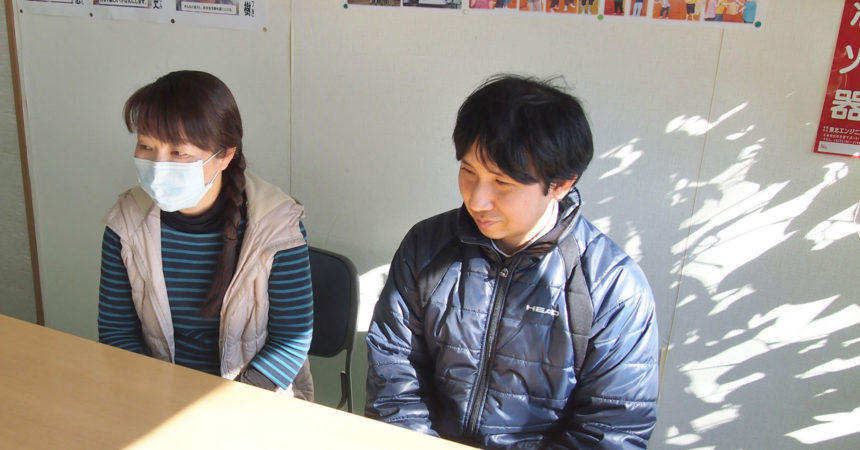
I hear you had been receiving vocational guidance from the foundation for a while, and you came to this evacuation center after talking with the foundation’s staff and nurses.
Konno: Yes. (To “Hitakami-en,” part of the same foundation that operates Kanan where Mr. Konno is currently working.)
Yanagibashi: (After the earthquake,) Mr. Konno was depending on a general evacuation center, but he was immediately taken in by relatives along with his siblings. But they needed to think about the future because they had lost their parents (in the earthquake), so they discussed their options with their relatives and nearby social workers. They ended up deciding to enter an evacuation center that had just been established at “Hitakami-en,” which is part of our foundation. The three of you started living in the evacuation center after that, right?
Konno: Yes. I was with my brother and sister at “Hitakami-en,” so we could eat meals and take baths there.
Yanagibashi: Then you moved to temporary housing, and now the three of you are living in public housing.
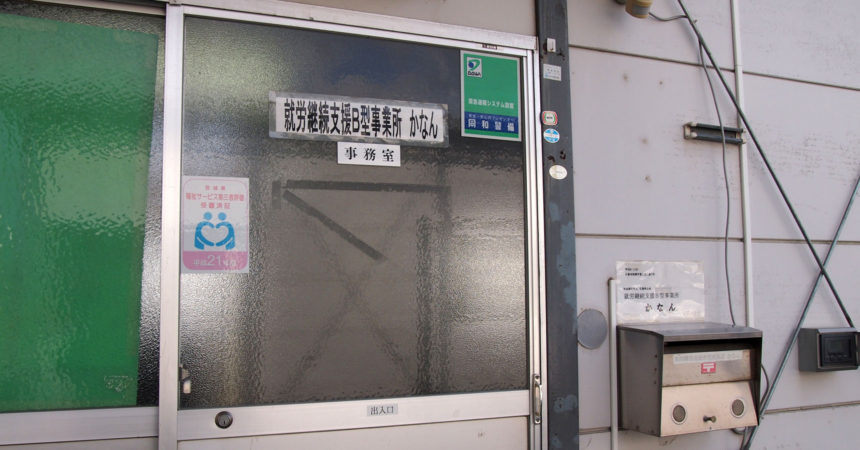
Konno: (After the disaster,) I kept working at the cake shop cleaning up things that had fallen down in the earthquake. At that time I was already living in the temporary housing.
But one day when it was raining really hard, I had an accident. I bumped into a car and hurt my foot.
(Being physically and mentally unstable at that time), when I started living in the temporary housing I was in no state to go to work. I took a long time off, and ended up quitting the cake shop.
Then I was introduced to Kanan, and I started working there.
Yanagibashi: As Shoshinkai’s staff in charge of career support heard about Mr. Konno’s case from HItakami-en, they started to liaise closely with Kanan. After having experienced the disaster, a changed home environment, his accident, and especially what happened with his parents, Mr. Konno was missing work often. He was no longer able to continue working. So after discussing it amongst themselves, the staff who had been seeing Mr. Konno introduced him to “Kanan” and suggested he try it for a while until things calmed down.
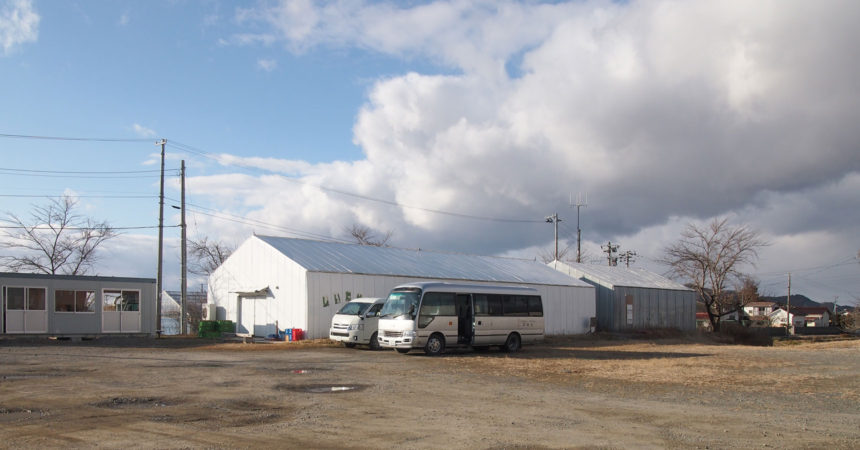
How do you like working at “Kanan”?
Konno: The work growing shiitake mushrooms is interesting. There are around 10 of us in charge of the mushrooms now. (They order shiitake mushroom substrate from Iwate, cultivate it for around a week, and package the mushrooms to sell.)
My job is watering the mushrooms and packaging them to sell. I put on stickers and do all kinds of other things. I use scissors to cut off mushrooms that have gotten big. I have things to do every day.
How is your work going?
Konno: I’m more used to it now, so I can do more things. I also sometimes teach new people who come in.
I want to ask about what “Hitakami-en” was like after it became an evacuation center.
Yanagibashi: Near our residential facility for the disabled, “Hitakami-en,” there’s a big canal attached to a river. Water (from the tsunami) came flowing over the banks of that canal, but miraculously the area around our facility was the only place spared from tsunami damage.
Then the Self-Defense Force came with helicopters to pull people out, starting with the most damaged areas by the sea. They brought the rescued people to Hitakami-en since we had this big, safe building. It’s a residential facility for disabled people, so we had no intention of running an evacuation center.
The Hitakami-en staff and residents had already fled inland, so at that time there was no one at the facility. So when the waves withdrew and everyone came back, they were all like, “People are living here!?” That was how the evacuation center got started.
But non-disabled disaster victims needed a different kind of support from disabled victims, and since it was exhausting for them to be together, we decided to have them live in separate places. We were sorry to inconvenience them, but we had the non-disabled folks move to a different building in the residential complex. The non-disabled evacuees stayed around 1-2 months. We just told them, you’re welcome to stay here until you can move to an evacuation center in another region. We started dividing them up like that around 4-5 days after we became an evacuation center.
When Hitakami-en first became an evacuation center, around how many people did you have including non-disabled folks?
Yanagibashi: I think there were around 20-30 non-disabled people from the region at first. That’s including small children and such.
As for disabled people, at first there were only a few. But then of course we heard about all kinds of problems happening at other evacuation centers (such as schools, where both disabled and non-disabled people were living).
So the Shoshinkai staff went around all the general evacuation centers (in the region), told them about the kind of center we were running, and asked disabled people if they’d like to move. After that, more and more disabled people gradually came to the Hitakami-en evacuation center.
By the first week or so, the big hospitals nearby were already full. Nurses couldn’t really do anything for people whose hometowns were unknown, who couldn’t talk well, or who were injured but couldn’t go home after treatment, so they sent them to our evacuation center.
For the first few days after we started the evacuation center, people were brought to us because their names were unknown and they seemed to have special needs, or because they had dementia. But we also got people who just didn’t really need medical treatment, and we completely immersed ourselves in caring for them all.
Around how many people transferred from general evacuation centers (like schools)?
Yanagibashi: I’m not sure about that number right now, but I don’t think many people came alone (most of them came as families). There were probably a few, but anyway, I think a lot of people were feeling lonely because they had lost their homes and families.
Since this was a residential facility, the rooms were around 9.5 square meters. We usually had two residents to a room, but then we assigned one room per household.
After the earthquake on 3/11, the victims had to face new problems for their futures as they lived together in evacuation centers. Almost all of them didn’t even have homes. So, with the cooperation of the Nippon Foundation and various other related entities, we built temporary housing (for the vulnerable people) in Oguni (a place in Ishinomaki City) to offer victims a place to think about their next steps.
It’s difficult to provide this kind of support with the staff of our foundation alone, so a lot of volunteers got involved with the evacuation center. We were able to continue operating the evacuation center thanks to their enduring support. After one or two months, some volunteers started bringing us ramen or cake. The staff of one vocational center for the disabled that makes cakes even brought us cake all the way from Aichi and Niigata. All kinds of people supported us from great distances.
What problems did you have with the evacuation center? What’s left an impression on you?
Yanagibashi: Personally, I had never met an elderly person with such severe dementia before.
I had heard about elderly people who shout obscenities and such, but I had never experienced it before, so it was a bit of a shock (to see with my own eyes).
But some of the volunteers (who came to the evacuation center) were good at caring for those people, so they helped with all kinds of things and taught me. I really learned a lot.
Ultimately, we did end up finding the families of some of the elderly people with no known relatives. Since it would have been difficult for their families to look after them if they stayed, some of them were moved to retirement homes in other prefectures with their families. Though it was kind of hard saying goodbye to one old lady who had really depended on our staff, and kept saying “I don’t have anyone.”
Evacuees also sometimes compared our center with other evacuation centers, and said things like, “They fed people meals over there, so why don’t we get fed here?”
Of course, we had never actually been certified as an evacuation center, so it did take some time before we were acknowledged and started getting reliable, regular support from the Self-Defense Force.
We used the ingredients we had at Hitakami-en or brought things from the foundation for people to eat, but sometimes non-disabled evacuees would go to other evacuation centers and hear all kinds of things, and then they would say, “Why is this evacuation center like such and such?” I remember that made me really sad.
Although I did feel like we did the best we could at the time, I also felt the pain of the disaster because we couldn’t understand each other’s feelings, and I realized the earthquake damaged us in these sorts of ways too.
That was the situation of people in general, but our disabled residents were with their families, so I think they were able to spend their time without worrying too much.
When did you start living in public housing?
Konno: I think I moved at the beginning of 2016… I guess it had been a year? My aunt and uncle helped me move.
Yanagibashi: It’s a stand-alone house, a big one-story bungalow built for disabled people and elderly people with weak legs and hips. We were just thinking he should start living in public housing like this soon, so we were happy.
And now you come on a shuttle bus from there. What time does your work start?
Konno: Usually… I get up at 6 in the morning and eat breakfast, then leave home around 9. (Work starts from 9:30.)
And since living in my new house, I’ve also made friends with the neighbors. A nice old couple.
Yanagibashi: The relatives who helped with the move said the house was designed to match the neighboring houses.
Is there a job you’d like to try doing in the future?
Yanagibashi: You’ve said you’d like to try working outside the foundation again, right?
Konno: Right now there’s nothing in particular I want to do in the future… And I’m not sure yet about going outside the foundation. But my work here is fun and fulfilling for me.
What are your thoughts after experiencing the disaster?
Konno: I guess just that I hope no more earthquakes will happen. I don’t know how I would go on if I lost any more of my family. I love my brother and sister so much, so I want to stay close to them. (Mr. Konno lost his father and mother in the disaster.)
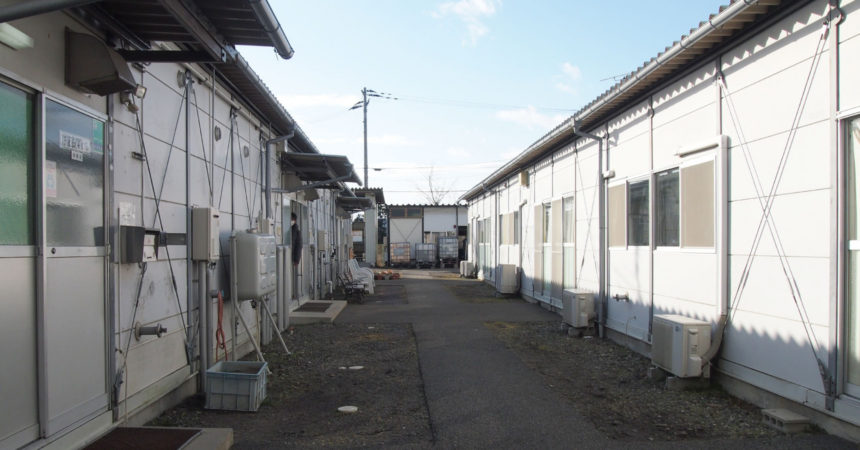
What are your thoughts for now and the future after your experience with the disaster?
Yanagibashi: Experiencing the disaster made me realize we can’t be off guard even though we live inland. I want to make sure we can respond, whether we’re shuttling our trainees or busy with other activities, based on where to flee to if such and such happens. We are actually working on evacuation maps and disaster response manuals. We’re focusing our efforts on those sorts of things while thinking about how we can protect our trainees.
We’ve been told that even if the canal overflows (due to a tsunami), the water probably won’t even reach one meter. But I can’t really say it’s okay for our trainees to be left standing even in less than one meter of water. I want to focus on evacuation training including our employees so we can figure out how to protect our trainees in that kind of situation.
Some of our trainees still get nauseous or panic during evacuation drills. Even though they’re alive and nothing has happened to their families, just hearing “It’s an earthquake” or “It’s a fire” startles them and makes them go stiff because they see a disaster situation. They remember 3/11. I think what they’re remembering is the time they were separated from their parents and spent a few days feeling terrible. I hope they can overcome those things a little at a time, and that we can stay by their sides and get stronger along with them.